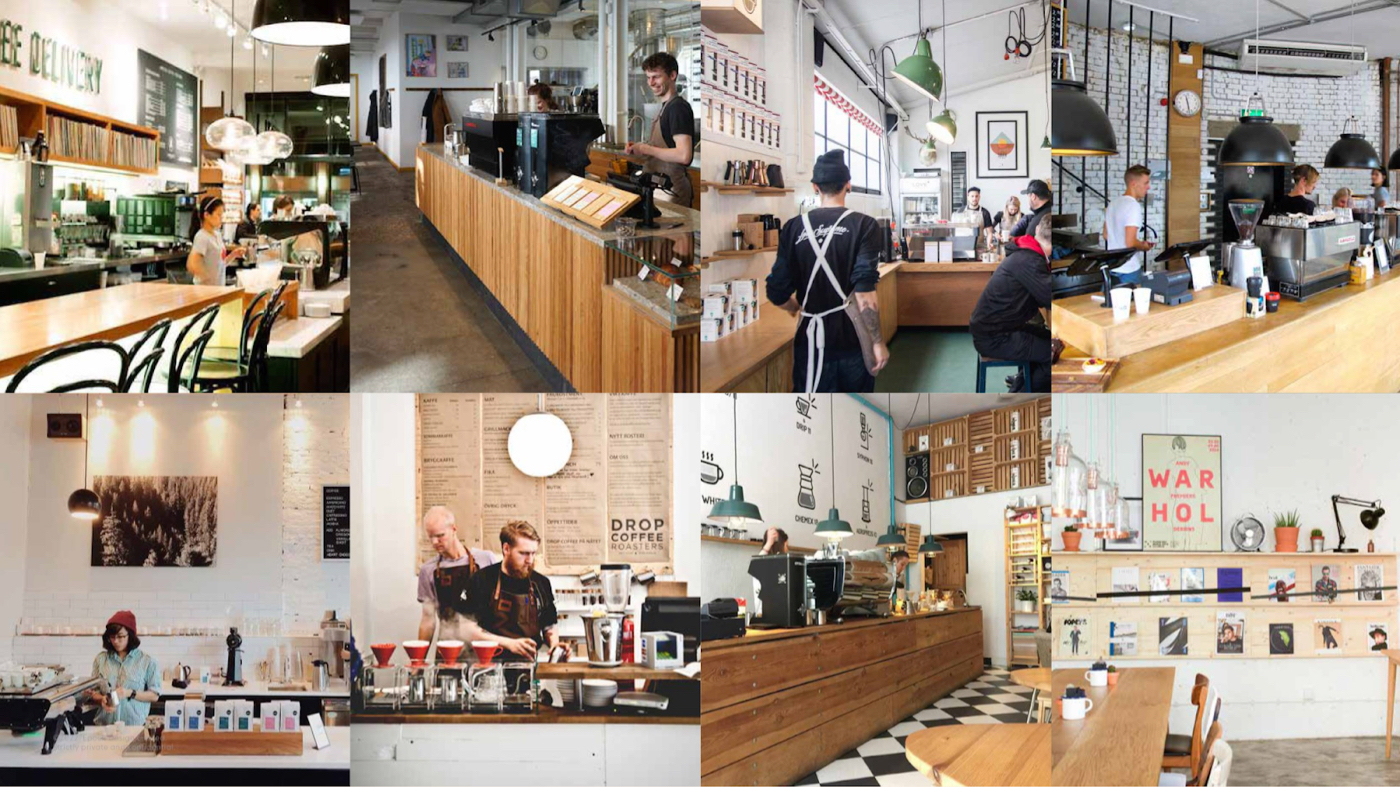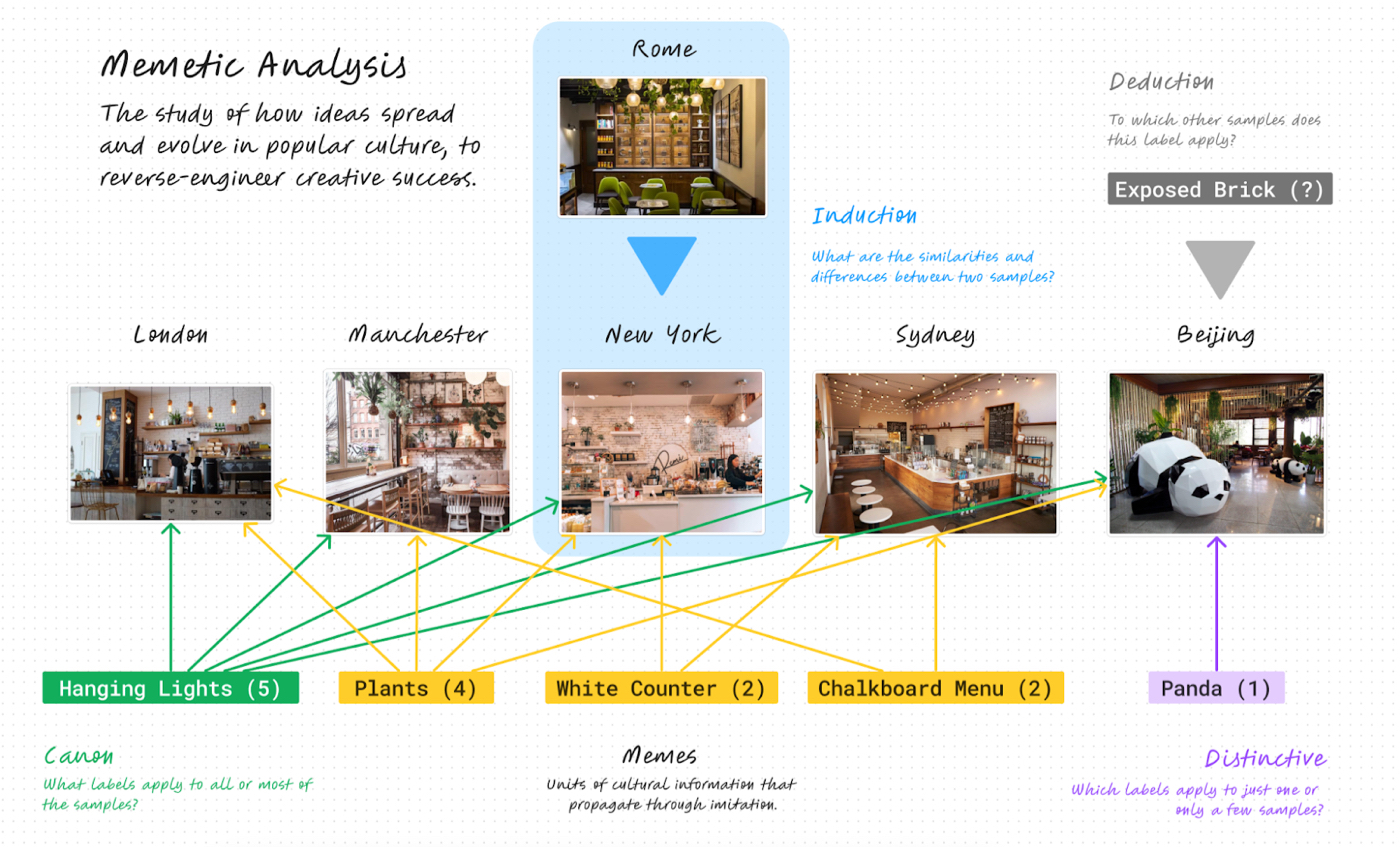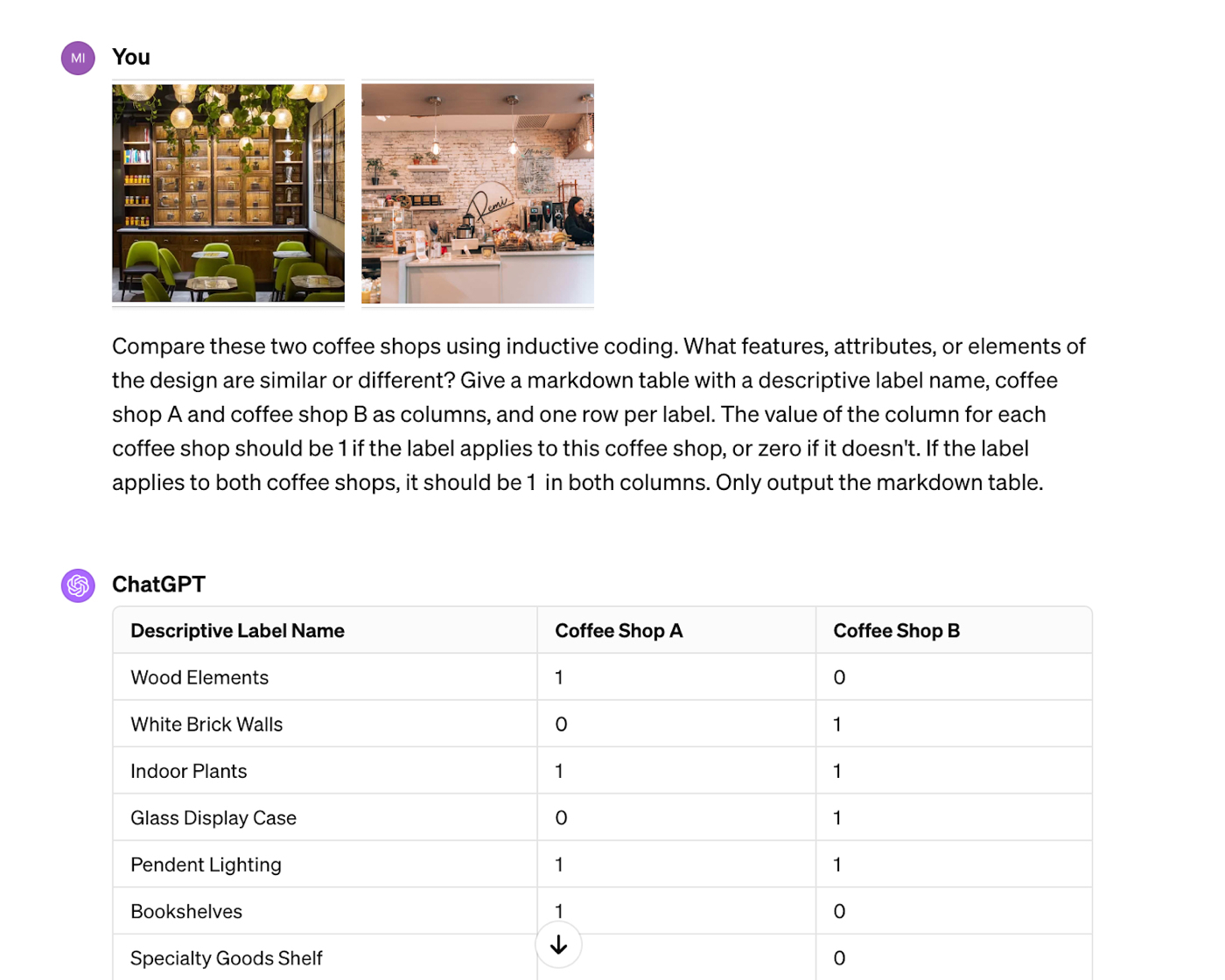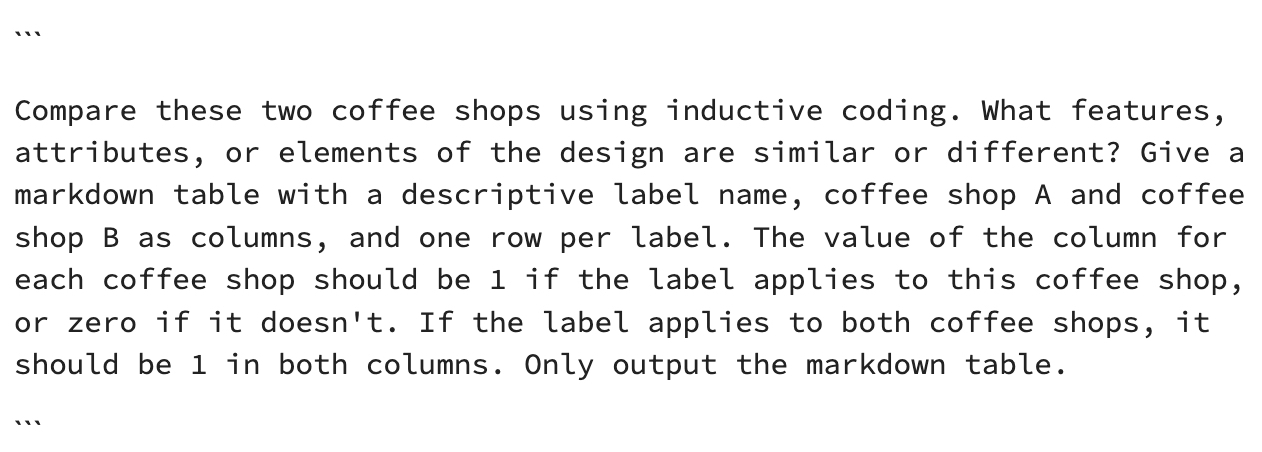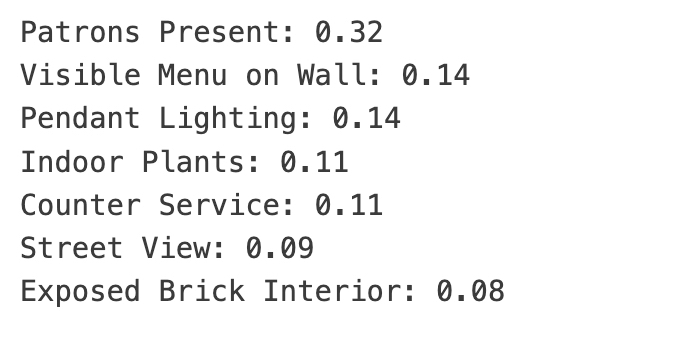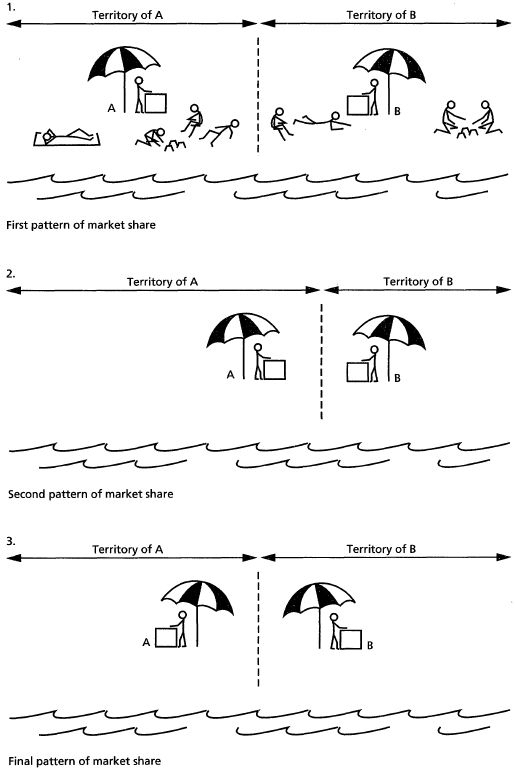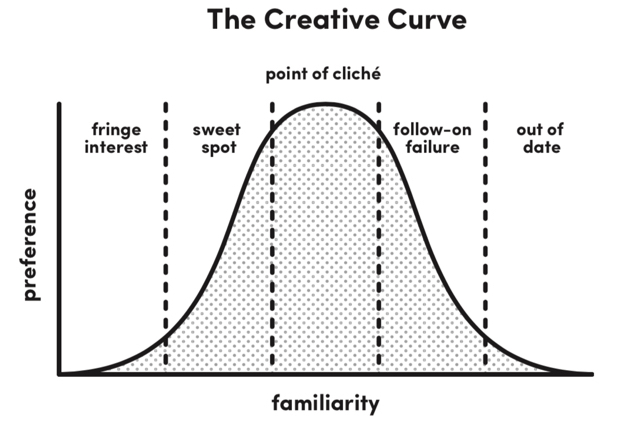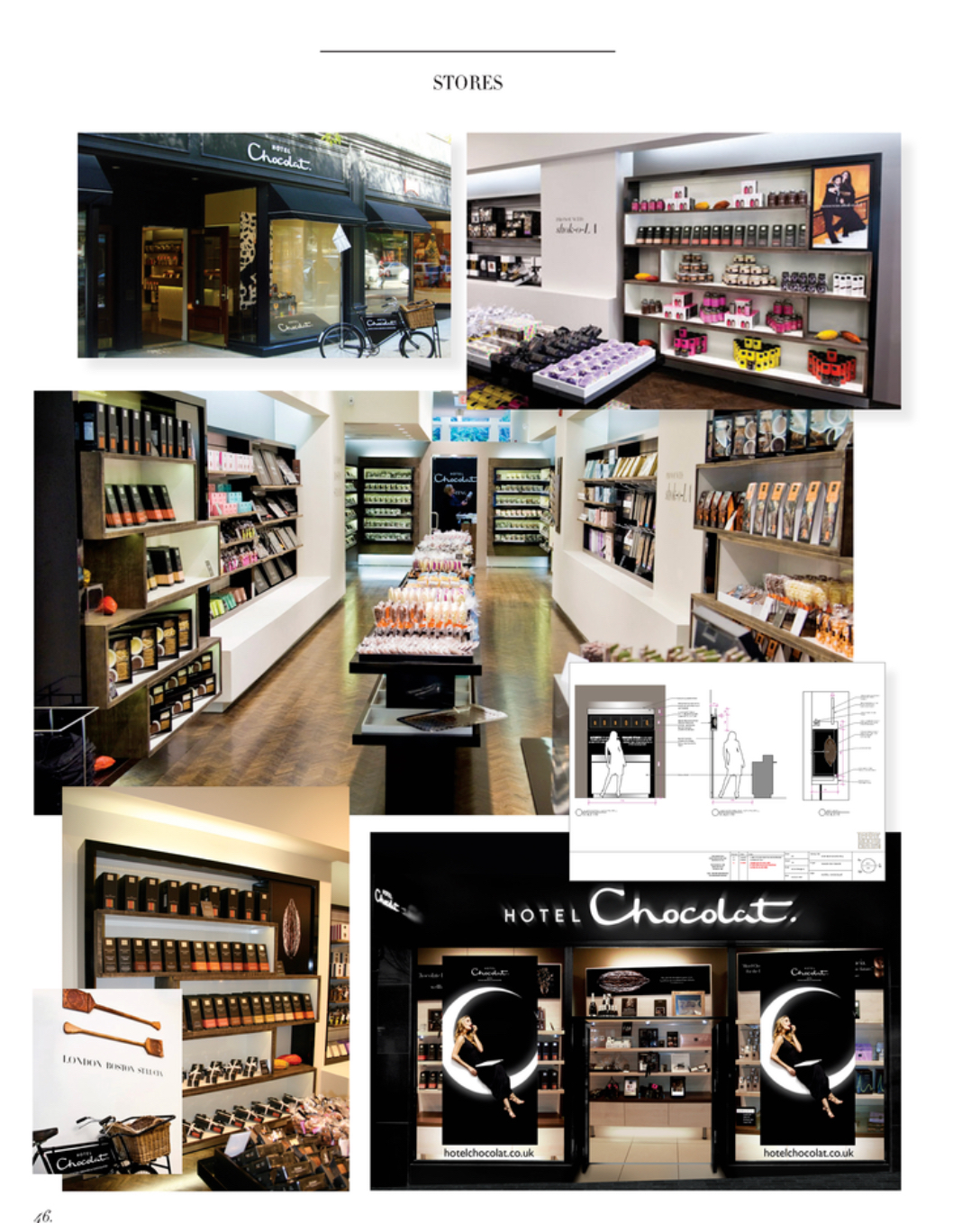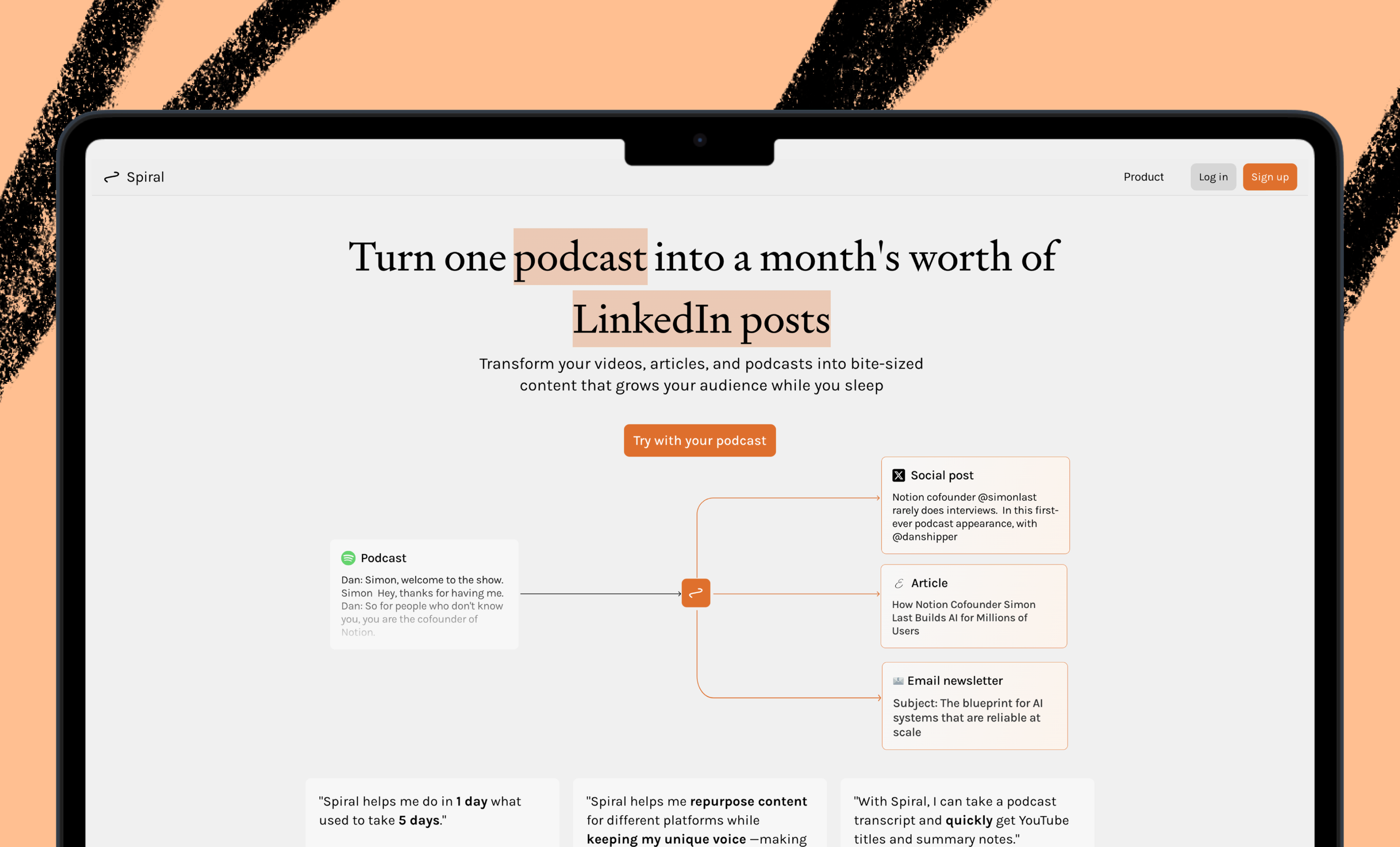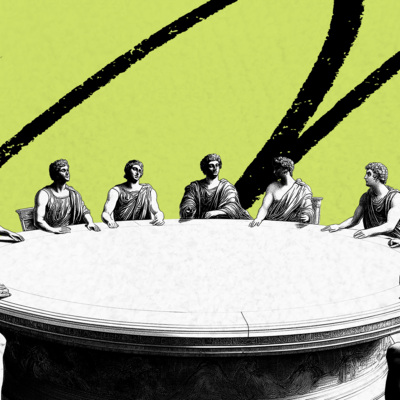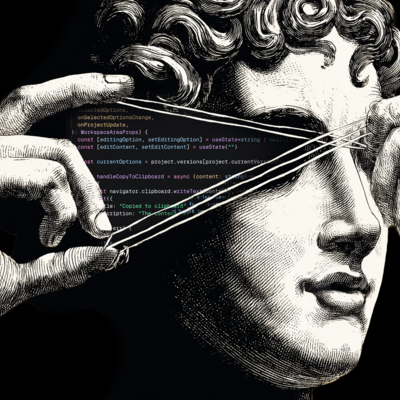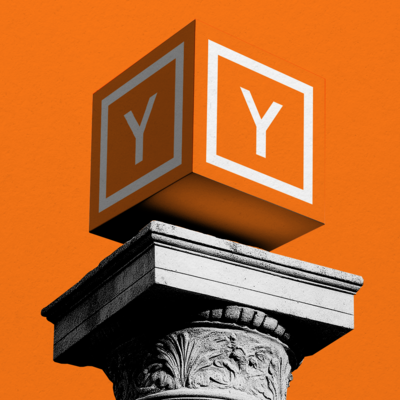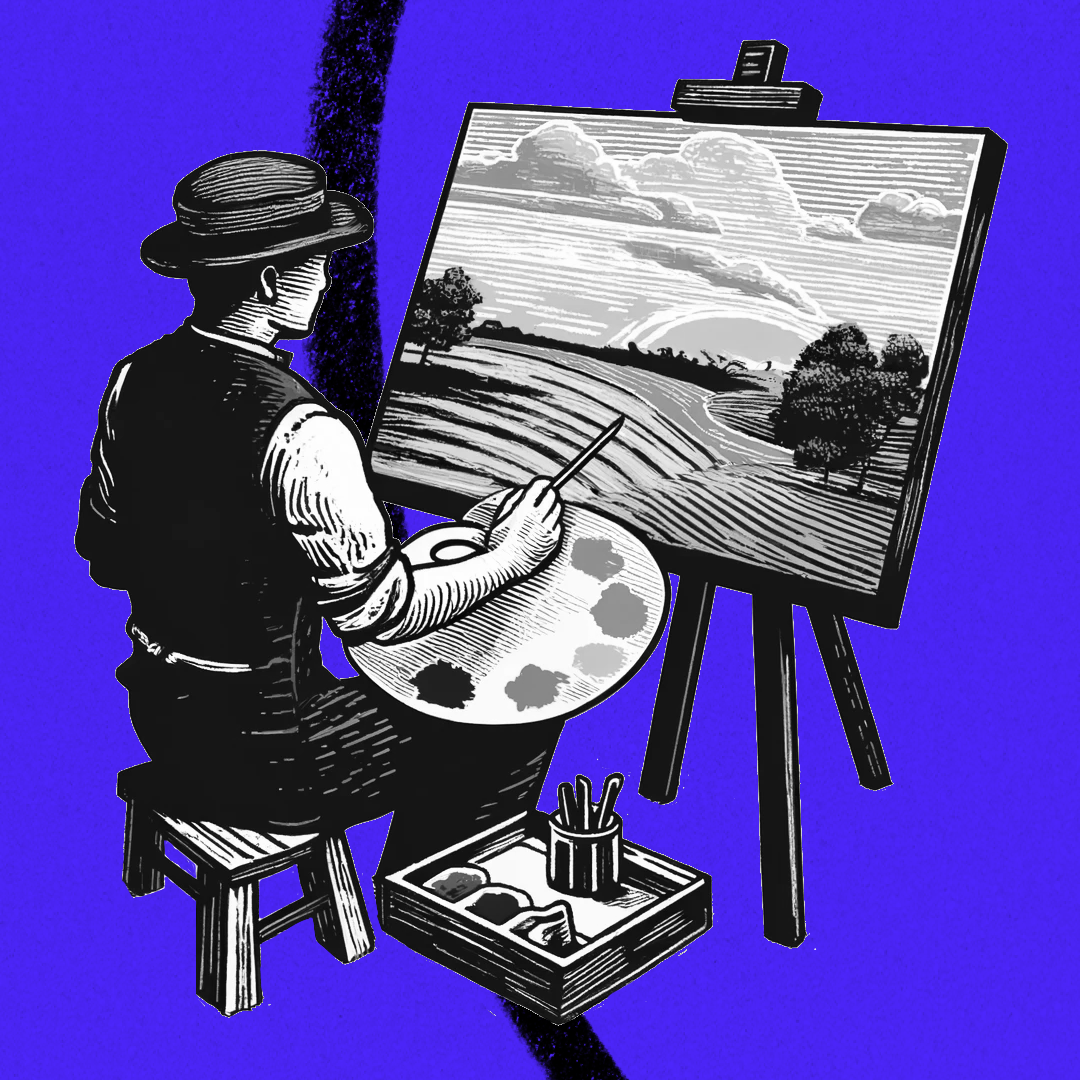
This week we’re bringing you some of our best writing on how to use AI by Michael Taylor, whose new column, Also True for Humans, examines how we work with and manage AI tools like we would human coworkers. (He’s also the co-author of a new book, Prompt Engineering for Generative AI.) Up today is this exploration of how AI is helping us know when to follow the herd and when to chart a new path.—Kate Lee
Was this newsletter forwarded to you? Sign up to get it in your inbox.
Walking into a coffee shop in Brooklyn or Bangkok, Des Moines or Dublin, you might notice some commonalities. You wouldn’t be surprised to see reclaimed wood furniture, hanging Edison bulbs, and minimalistic design choices. There might be elaborately tattooed baristas and indie folk music playing in the background.
This isn’t a mistake. Sameness is a powerful thing. Customers learn to look out for visual cues, which signal whether they’re in the right place or not.
There isn’t a global conspiracy to make all coffee shops look alike. It’s just that the internet has connected our world in a way that social media algorithms propel winning combinations to the whole world, flattening our culture, as Kyle Chayka writes in his book Filterworld. Ignore convention at your peril.
Tapping into design cues, if implemented correctly, can remove some of the risk and uncertainty that comes with starting a new business. The key is to know when to be similar and when to be different.
That matters because, according to the U.S. Bureau of Labor Statistics, 90 percent of startups fail, a data point that has remained consistent since the 1990s. But entrepreneurs who have started a successful business in the past are three times more likely to succeed the second time around. Experiencing success seems to lead to more success. As we established in part one of this series, artificial intelligence can help entrepreneurs compensate for a lack of experience by helping summarize and analyze the lessons from others’ success. It can find the sameness so you can exploit it.
If you’re opening that coffee shop—in any city—you need to make strategic decisions about how similar or different it should be from consumer expectations. Finding the right balance could mean the difference between starting a beloved café and investing in a money pit.
Source: Alex Murrell.Memetic analysis with GPT-4V
This flattening of culture doesn’t just apply to coffee shops. In his essay, “The Age of Average,” Alex Murrell found the same effect in everything from the design of cars to architecture to Airbnbs: If you deviate too far from what customers expect, you might become one of the 90 percent of new businesses that fails. You don’t have to adopt every fad or stereotype, but you need to know what risks you’re taking when you decide to differentiate. From a practical perspective, you’d want to look at lots of examples of other coffee shops until you notice patterns in their similarities and differences—aka memetic analysis.
Source: The author.Memetic analysis is rooted in grounded theory, which is a method for deriving insights from the data you have collected. It’s an iterative process starting with inductive coding, in which you identify similarities and differences between different samples. If we compare a coffee shop in Rome to one in New York, we might find the one in Rome features green upholstered seats, leather-bound books, and rich mahogany furniture, while the one in New York has white plastic chairs, exposed brick walls, and marble countertops. They may both have green plants, dangling pendant lights, and an iPad attached to its cash register.
Do this enough times for different pairings, and you’ll get a database of labels—also called codes or memes—that you can use for deductive coding, or finding what other samples from your database share these attributes (i.e., how many coffee shops have exposed brick?). This is boring, manual work, especially when you have hundreds or thousands of samples to sift through. Thankfully, since ChatGPT was upgraded to “see” images—called GPT-4V for developers, and the “v” is for vision—)—AI can help automate this process:
Source: Screenshots courtesy of the author.Here’s the prompt I used:
This week we’re bringing you some of our best writing on how to use AI by Michael Taylor, whose new column, Also True for Humans, examines how we work with and manage AI tools like we would human coworkers. (He’s also the co-author of a new book, Prompt Engineering for Generative AI.) Up today is this exploration of how AI is helping us know when to follow the herd and when to chart a new path.—Kate Lee
Was this newsletter forwarded to you? Sign up to get it in your inbox.
Walking into a coffee shop in Brooklyn or Bangkok, Des Moines or Dublin, you might notice some commonalities. You wouldn’t be surprised to see reclaimed wood furniture, hanging Edison bulbs, and minimalistic design choices. There might be elaborately tattooed baristas and indie folk music playing in the background.
This isn’t a mistake. Sameness is a powerful thing. Customers learn to look out for visual cues, which signal whether they’re in the right place or not.
There isn’t a global conspiracy to make all coffee shops look alike. It’s just that the internet has connected our world in a way that social media algorithms propel winning combinations to the whole world, flattening our culture, as Kyle Chayka writes in his book Filterworld. Ignore convention at your peril.
Tapping into design cues, if implemented correctly, can remove some of the risk and uncertainty that comes with starting a new business. The key is to know when to be similar and when to be different.
That matters because, according to the U.S. Bureau of Labor Statistics, 90 percent of startups fail, a data point that has remained consistent since the 1990s. But entrepreneurs who have started a successful business in the past are three times more likely to succeed the second time around. Experiencing success seems to lead to more success. As we established in part one of this series, artificial intelligence can help entrepreneurs compensate for a lack of experience by helping summarize and analyze the lessons from others’ success. It can find the sameness so you can exploit it.
If you’re opening that coffee shop—in any city—you need to make strategic decisions about how similar or different it should be from consumer expectations. Finding the right balance could mean the difference between starting a beloved café and investing in a money pit.
Source: Alex Murrell.Memetic analysis with GPT-4V
This flattening of culture doesn’t just apply to coffee shops. In his essay, “The Age of Average,” Alex Murrell found the same effect in everything from the design of cars to architecture to Airbnbs: If you deviate too far from what customers expect, you might become one of the 90 percent of new businesses that fails. You don’t have to adopt every fad or stereotype, but you need to know what risks you’re taking when you decide to differentiate. From a practical perspective, you’d want to look at lots of examples of other coffee shops until you notice patterns in their similarities and differences—aka memetic analysis.
Source: The author.Memetic analysis is rooted in grounded theory, which is a method for deriving insights from the data you have collected. It’s an iterative process starting with inductive coding, in which you identify similarities and differences between different samples. If we compare a coffee shop in Rome to one in New York, we might find the one in Rome features green upholstered seats, leather-bound books, and rich mahogany furniture, while the one in New York has white plastic chairs, exposed brick walls, and marble countertops. They may both have green plants, dangling pendant lights, and an iPad attached to its cash register.
Do this enough times for different pairings, and you’ll get a database of labels—also called codes or memes—that you can use for deductive coding, or finding what other samples from your database share these attributes (i.e., how many coffee shops have exposed brick?). This is boring, manual work, especially when you have hundreds or thousands of samples to sift through. Thankfully, since ChatGPT was upgraded to “see” images—called GPT-4V for developers, and the “v” is for vision—)—AI can help automate this process:
Source: Screenshots courtesy of the author.Here’s the prompt I used:
ChatGPT can save us a lot of time, and might potentially be more consistent and less biased than a human rater. However, even though ChatGPT saves us time where we might otherwise rely on manual review, it’s still tedious for a human to need to upload two images at a time, copy and paste all the labels into a spreadsheet, and repeat the process a few hundred times. Thus, knowing how to code (or working with someone who does) can come in handy, because you can access GPT-4V (the developer version of ChatGPT) to process thousands of these requests in minutes, rather than doing everything yourself.
I won’t bore you with the code, but at a high level, here are the steps:
1. Scrape images from the web
To get the images for the analysis, I used a free Google Images scraping script, added my list of keywords to the main.py file, and downloaded the Chrome Web Driver to the folder, before running the script. I only ran it for 15 minutes, but I could have left it on overnight to catalog many more images.
2. Change the output format to JSON
I changed the prompt to output JSON (a data format) instead of a markdown table, and wrote a simple Python script I can run on any two coffee shops to get structured data back with their labels. Most developers do prompting this way, because it’s easier to make use of the results when they’re in a consistent data format. From JSON, you can easily use the data as input for another script, display it on a web page, or export it into a CSV file.
3. Run deductive coding on the labels
With the list of labels I got back, I then ran the deductive coding step to check every label against every coffee shop, and see what percentage they applied to. This step took the most time because I had to check every label against every image, and all of those calls to OpenAI add up. You can speed this part up by making the code asynchronous, which just means sending more than one request to OpenAI at a time, which are processed simultaneously (like a supermarket opening more checkout lanes to decrease the time spent waiting in line).
4. Interpret the analysis and take action
Summing up the number of times each label appeared across our list of coffee shop images gives us some indication of what was popular and what wasn’t. Labels that appear in every coffee shop may be important to copy, and labels that appear infrequently might give us inspiration for where to differentiate.
Since 32 percent of coffee shop photos show patrons, I can keep that in mind while taking photos of my own coffee shop for its website. I also see that only around 8 percent of coffee shop images have an exposed brick interior, but 14 percent show pendant lighting. That’s surprising—I would have thought each was more popular. Take notes when you’re surprised, because it’s a sign the assumptions are wrong or need updatingIt took me about 100 lines of code, using OpenAI’s documentation, to generate a qualitative analysis of 564 images of coffee shops from around the world. It likely saved me a week’s worth of time—minus 30 minutes to write and run the code—assuming I would even have the stamina to meticulously catalog comparisons between hundreds of coffee shops. Plus, I’ve now seen hundreds more coffee shop designs in far more detail than any of my competitors, giving me an advantage in designing a coffee shop that resonates with customers.
I recently used this method while building an Udemy course, which is now the top prompt engineering course on the platform. I identified what sorts of titles, descriptions, and course structures were correlated with more reviews (a proxy for sales), and designed the entire course based on what works best on the platform. I can’t know how I would have done without memetic analysis, but it was half a day’s extra work for a project that ended up paying my mortgage. You can hope to get lucky, or you can use memetic analysis to rig the game in your favor.
What to copy and where to differentiate
No matter what industry in which you’re operating, you need to make informed, strategic decisions about what conventions you’ll adopt and where you want to innovate, where you’ll zig and where you’ll zag.
The case for copying
You should default to covering the majority of the common attributes your analysis found, because it almost always makes sense to copy your competitors closely. Hotelling's law uses game theory to explain why most competitors physically move closer together over time, using an example of ice cream vendors on a beach. If seller A starts at one end of the beach and seller B is at the other end, seller A can claim more sales by moving closer to the middle, because they will be the nearest vendor to a larger share of the beach. At equilibrium, both sellers end up in the middle, right next to each other, which is why you so often see Burger King and Wendy’s crop up next to McDonald’s on the same street. This law doesn’t just apply to location, but also to branding, features, and anything else that affects a consumer’s likelihood of buying a product.
Source: Vivify.Where do you differentiate?
It’s easy to recall examples where competitors in an industry have become commoditized and more or less the same, but if it’s always rational to converge on the middle of the market to gain the most market share, why is product differentiation such a powerful strategy?
In the beach example, both vendors sold ice cream, and the customers didn’t care who they bought it from. In reality, there’s not just one undifferentiated mass of consumers: they are made up of different segments with unique preferences. Most like vanilla, chocolate, or strawberry, but enough people like birthday cake flavored ice cream that a seller can win more customers by being the only one to offer it. Wherever there is a real difference between what one segment prefers and what the mainstream consumer wants on average, there’s an opportunity for differentiation. Differentiation comes with danger: offering birthday cake ice cream means not offering a more popular flavor, and may even put some customers off. Every decision to cater to a specific niche risks decreasing the size of your target market, so it’s only a viable strategy for the smaller players that would otherwise be crushed by the scale advantages of larger players.
In the craft beer industry, smaller U.S. breweries were driven to near-extinction by beer behemoths. Mass production made beer cheap to produce and left room for huge national advertising budgets, which, in turn, increased the scale of production, leading to further cost and distribution savings, until the large breweries had what seemed like an insurmountable advantage.
Craft breweries survived by occupying an ecological niche—differentiating in flavor, such as adding more hops, or brewing with fruits and spices—which the big breweries were unwilling to do. In order to cater to different flavor profiles, they brewed in smaller batches, eliminating their cost advantage. Dedicated craft beer drinkers were less price-sensitive, willing to pay a premium for more flavorful beer, even making the purchase part of their identity. The key is that it has to be a real differentiator, not just slapping a different label on the bottle; otherwise it wouldn’t have been prohibitively costly for the big breweries to counter.
Getting the timing right
Nobody can predict when an evolutionary leap will occur in an industry, but if you dig deep into fringe communities you can figure out when to react, as marketing executive Allen Gannett demonstrated in his book, The Creative Curve.
Source: The Creative Curve.Gannett’s curve starts within fringe communities, where some small market segment starts to care about a specific feature or basket of attributes enough to pay a premium. In your analysis, you can find this by paying attention to labels that appear only a small handful of times. Adopting one of these differentiators is the riskiest proposition, because most fringe interests stay fringe. However, if you spot a number of coffee shops adopting something that wasn’t that popular a year ago, you might have found something in the sweet spot between preference and familiarity: just familiar enough to go mainstream, but differentiated enough to help you stand out in a particular segment of the market. These so-called vibe shifts occur through a form of cultural natural selection in the evolution of ideas, as the old way of doing things becomes saturated, causing influential players in the space to find something new.
Remixing ideas to make something new
Say you notice that more and more fitness enthusiasts are grabbing protein shakes with coffee in them for a post-workout boost. You might seize the opportunity to be the only non-hipster coffee shop, capitalizing on this trend by decorating your coffee shop like a CrossFit gym or SoulCycle studio.
But even when differentiating yourself from the rest of your category, be careful to copy the right design elements that will resonate with your target customers. For example, Hotel Chocolat creative director Fredrik Ahlin chose not to compete with fellow chocolatiers, and instead decorated its stores like a high-end makeup store, advertising in Vogue to signal to its intended clientele that this was a place they belonged. Much of what we call innovation is just combining ideas from multiple sources.
Source: In the Zeitgeist/Fredrik Ahlin.While following the crowd and adopting industry norms is a safe strategy, true innovation often requires going against the grain. Successful differentiation involves identifying and catering to the unique preferences of a specific market segment, and taking the risk of deviating from the mainstream. No analysis can tell you what to do—you still have to decide for yourself. However, by conducting memetic analysis and staying attuned to emerging trends and fringe interests, you can spot opportunities that others missed and make more informed creative decisions. Nothing can guarantee creative success, but memetic analysis can increase your odds.
After all, you have to know the rules in order to break them.
Michael Taylor is a freelance prompt engineer, the creator of the top prompt engineering course on Udemy, and the co-author of the new book Prompt Engineering for Generative AI. He previously built Ladder, a 50-person marketing agency based out of New York and London.
To read more essays like this, subscribe to Every, and follow us on X at @every and on LinkedIn.
Ideas and Apps to
Thrive in the AI Age
The essential toolkit for those shaping the future
"This might be the best value you
can get from an AI subscription."
- Jay S.
Join 100,000+ leaders, builders, and innovators

Email address
Already have an account? Sign in
What is included in a subscription?
Daily insights from AI pioneers + early access to powerful AI tools
Ideas and Apps to
Thrive in the AI Age
The essential toolkit for those shaping the future
"This might be the best value you
can get from an AI subscription."
- Jay S.
Join 100,000+ leaders, builders, and innovators

Email address
Already have an account? Sign in
What is included in a subscription?
Daily insights from AI pioneers + early access to powerful AI tools
